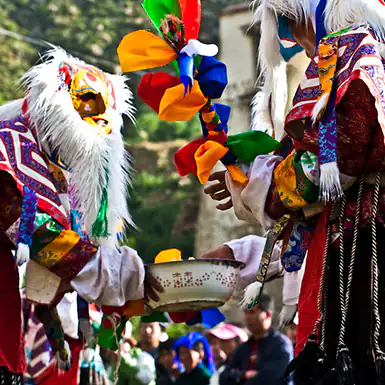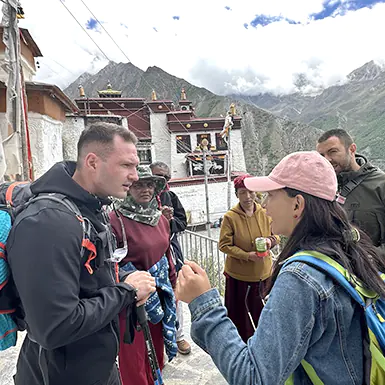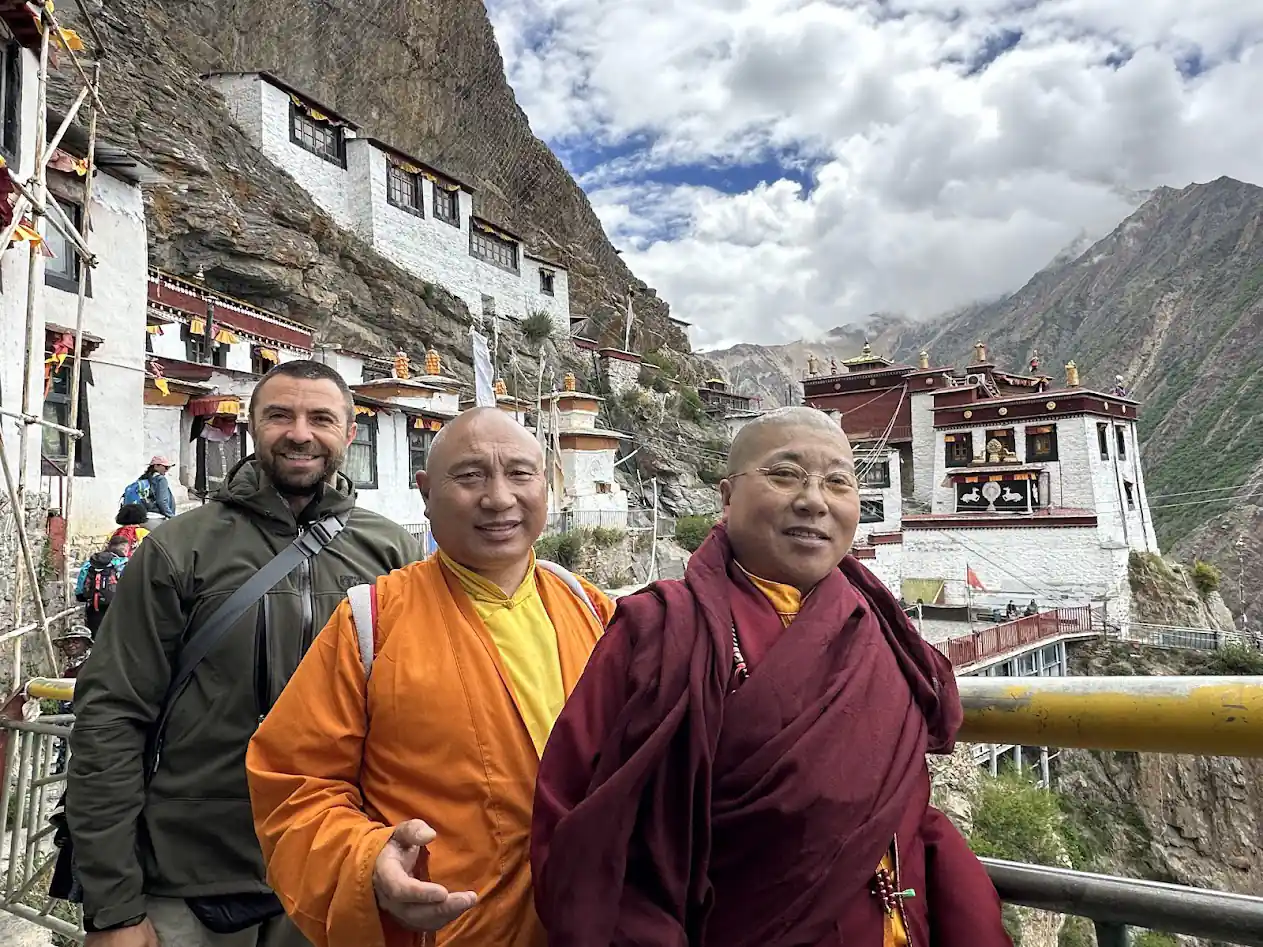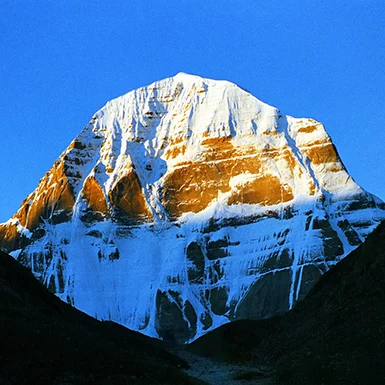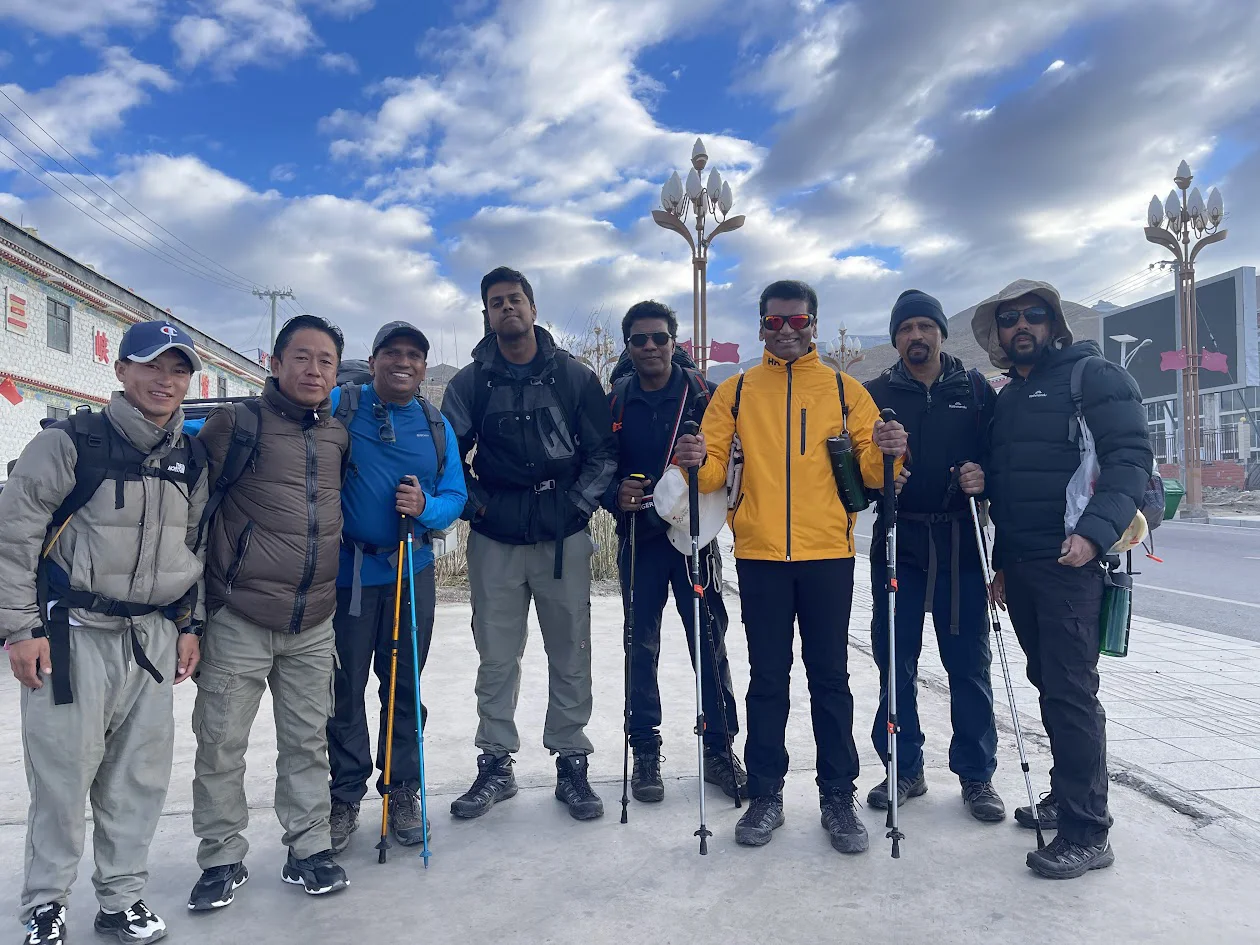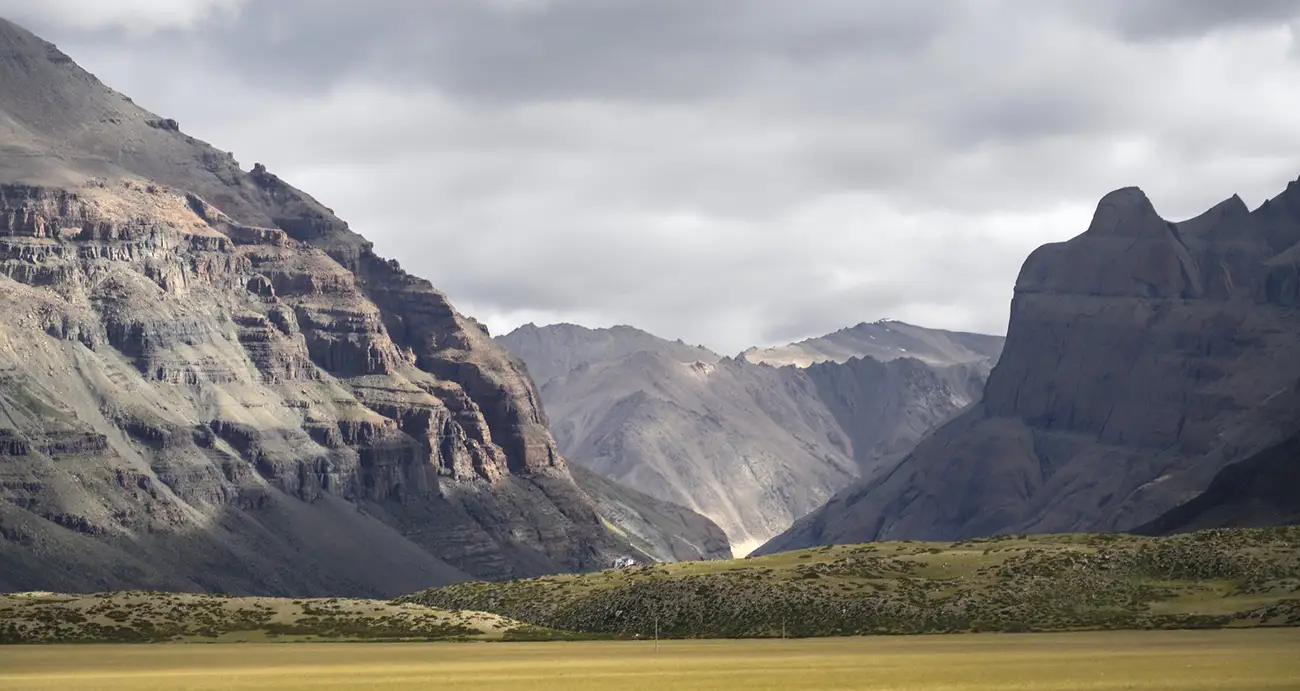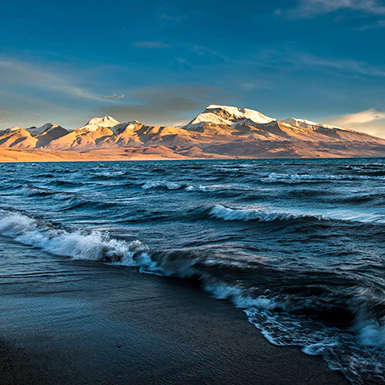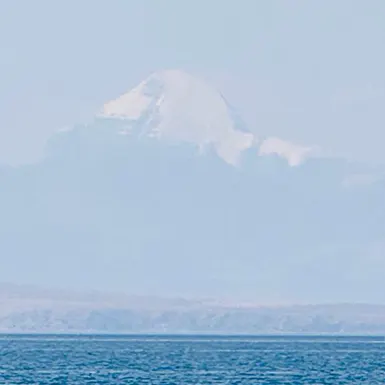Shoton Festival: A Celebration That Transforms Tibet
The Shoton Festival Lhasa is not just a celebration; it actively shapes and enriches Tibetan society through cultural preservation, economic growth, and global exchange.
Living Legacy: Preserving Tibetan Culture
The festival guards Tibet’s rich heritage, ensuring ancient traditions thrive for generations.
- Thangka Unveiling: The grand unveiling of intricate thangka paintings celebrates Tibetan artistry and spiritual devotion, ensuring the continuation of this sacred art form.
- Tibetan Opera (Lhamo): The festival provides a vital platform for Lhamo performances, allowing this unique form of storytelling and artistic expression to flourish. These operas safeguard historical narratives, Buddhist teachings, and traditional Tibetan values.
- Cultural Exhibitions: By highlighting Tibetan art, handicrafts, costumes, and cuisine, the festival cultivates an appreciation for the region’s diverse culture and skilled craftsmanship.
A Tourism Magnet: Opening Doors to Tibetan Culture
The Shoton Festival attracts visitors worldwide, offering a unique opportunity to experience Tibetan culture firsthand, boosting the local economy, and creating employment.
- Economic Boost: Local businesses, including hotels, restaurants, shops, and tour operators, significantly benefit from the surge of tourists during the festival.
- Cultural Exchange: The festival generates significant benefits for both locals and tourists. This exchange of ideas and perspectives enriches both groups and promotes understanding and appreciation of different cultures.
- Sustainable Practices: As tourism grows, ongoing efforts strive to ensure sustainability and benefit the local community. These initiatives aim to preserve the environment and support local businesses.
International Cultural Exchange: Building Bridges
The Shoton Festival transcends geographical boundaries, acting as a vibrant hub for international cultural exchange. It draws scholars, artists, and enthusiasts from diverse countries, fostering dialogue and collaboration.
- Academic Gatherings: The festival often hosts academic conferences and seminars on Tibetan culture, history, and Buddhism, uniting experts worldwide to share knowledge and insights.
- Artistic Collaborations: Artists from different backgrounds participate in the festival, showcasing their work and collaborating with Tibetan artists. This fusion of artistic styles enriches the cultural landscape.
- Global Spotlight: The festival highlights Tibet’s unique cultural heritage internationally. Media coverage and word-of-mouth spark widespread interest in Tibetan traditions and entice travelers to visit the region.
Personal Stories from the Heart of Tibet
The Shoton Festival Lhasa is more than just grand events and performances; it’s a tapestry of personal connections, unexpected moments, and cherished memories. Here’s what some festival-goers have to say about their experiences:
Thangka Unveiling: Awe-Inspiring and Spiritual
- “As the sun peeked over Drepung Monastery, a hush descended upon the crowd. Then, with a collective gasp, the massive thangka unfurled, revealing its vibrant colors and intricate details. A wave of emotion washed over me, a feeling of awe and wonder that will forever remain etched in my memory.” – Sarah, a traveler from Canada.
- “The Thangka Exhibition transcended mere visual spectacle; it was a profound spiritual experience. I felt deeply connected to the Tibetan Buddhist faith and its time-honored traditions.” – Tenzin, a Tibetan monk.
Tibetan Opera: A Journey into Enchantment
- “The Lhamo performances at Norbulingka Palace were utterly captivating,” raved David, a photographer from the UK. “The costumes, the music, the stories… it was like stepping into another world. The performers’ passion and energy were mesmerizing.”
- “I had the incredible opportunity to meet some opera performers after a show. They welcomed me with open arms and eagerly shared their knowledge of Lhamo. It was a truly enriching cultural exchange.” – Pema, a student from China.
Festival Atmosphere: Joy, Laughter, and Shared Moments
- “The Sho Dun Festival is a time for pure joy and shared celebration. I loved wandering through the bustling markets, sampling delicious street food, and spontaneously joining picnics in the parks. The atmosphere was electric!” – Maria, a backpacker from Spain.
- “One magical evening, I stumbled upon a group of locals singing and dancing in the streets. They invited me to join their impromptu revelry, and we danced under the moonlight. It was an unforgettable moment of pure joy and connection.” – Wangchen, a resident of Lhasa.
A Photographer and Videographer’s Guide to Capturing Tibetan Culture
The Shoton Festival Lhasa presents a visual feast, offering photographers and videographers a chance to capture the essence of Tibetan culture. However, documenting this vibrant event goes beyond technical expertise; it involves respecting local customs and understanding the spiritual significance behind the festivities. Here’s how to report your experience responsibly and creatively:
Photography Tips for the Shoton Festival
Thangka Unveiling
- Showcase the Grandeur: Employ a wide-angle lens to encapsulate the thangka’s immense size against the awe-inspiring Tibetan landscape.
- Highlight the Details: Switch to a telephoto lens to emphasize the thangka’s intricate details and artistry.
- Embrace the Light: The morning light bathes the unveiling in a magical glow. Experiment with various angles and exposures to create stunning photographs.
Tibetan Opera (Lhamo)
- Convey Emotion: Focus on the performers’ expressive faces and dynamic movements to capture the drama and emotion of the opera.
- Freeze the Action: Utilize a fast shutter speed to freeze the intricate dance steps and vibrant costumes in sharp detail.
- Explore Different Angles: Shoot from various perspectives to add visual interest to your images. Experiment with low angles to accentuate the grandeur of the costumes or high angles to capture the full scope of the performance.
Other Festivities
- People Portraits: Capture the joy and excitement of festival-goers, but remember to ask permission before taking close-up portraits.
- Candid Moments: Seek out genuine moments of interaction between people, monks, and performers to tell authentic stories through your images.
- Street Life: Document the bustling markets, colorful processions, and lively street performances to capture the festival’s vibrant atmosphere.
Videography Tips for the Shoton Festival
- Stabilize Your Shots: Use a gimbal or tripod to ensure smooth, stable footage, especially during the thangka exhibition and opera performances.
- Record the Soundscape: Capture the festival’s unique sounds—the chanting of monks, the melodic opera music, and the joyous laughter of the crowd. These audio elements will enrich your video.
- Capture the Ambience: Don’t limit your focus to the main events. Pan your camera to capture the overall ambiance, including the festive decorations, bustling food stalls, and people enjoying the festivities.
- Interview Locals: If given the opportunity, interview locals to gain their perspectives on the festival and its significance. Adding this information will add depth and context to your video.
Sharing Your Creations: Respect and Responsibility
- Seek Permission: Always ask permission before photographing or filming individuals, especially monks and nuns.
- Be Mindful of Sacred Spaces: Respect the festival’s spiritual nature. Avoid using flash photography during religious ceremonies and disrupting performances.
- Share with Context: When sharing your images and videos online, provide context and respect the festival’s cultural significance. Please share your pictures and videos responsibly, ensuring they do not disrespect or offend anyone.
